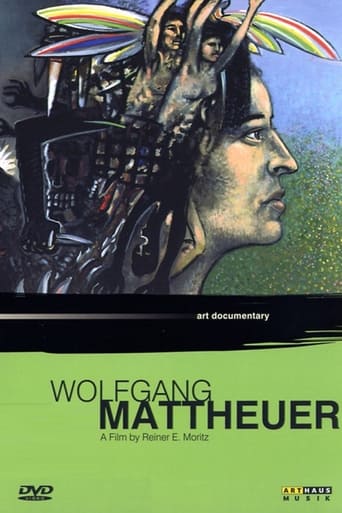Wolfgang Mattheuer
Wolfgang Mattheuer, together with Bernhard Heisig and Werner Tübke, is one of the main protagonists of the Leipzig School. With works such as Behind the Seven Mountains (1973) the graphic artist, painter and sculptor is one of the most controversial and yet most celebrated artists of the former GDR. With the use of mythology, literary references, and ambiguous details, he subverted the ideological edicts of the system. This film presents the great works of this reserved, yet perceptive ‘picture maker’. An insightful interview with Mattheuer introduces us to his eclectic visual world and his metaphorical response to contemporary events and the GDR regime. Wolfgang Mattheuer, together with Bernhard Heisig and Werner Tübke, is one of the main protagonists of the Leipzig School. With works such as Behind the Seven Mountains (1973) the graphic artist, painter and sculptor is one of the most controversial and yet most celebrated artists of the former GDR. With the use of mythology, literary references, and ambiguous details, he subverted the ideological edicts of the system. This film presents the great works of this reserved, yet perceptive ‘picture maker’. An insightful interview with Mattheuer introduces us to his eclectic visual world and his metaphorical response to contemporary events and the GDR regime. Wolfgang Mattheuer, together with Bernhard Heisig and Werner Tübke, is one of the main protagonists of the Leipzig School. With works such as Behind the Seven Mountains (1973) the graphic artist, painter and sculptor is one of the most controversial and yet most celebrated artists of the former GDR. With the use of mythology, literary references, and ambiguous details, he subverted the ideological edicts of the system. This film presents the great works of this reserved, yet perceptive ‘picture maker’. An insightful interview with Mattheuer introduces us to his eclectic visual world and his metaphorical response to contemporary events and the GDR regime. Wolfgang Mattheuer, together with Bernhard Heisig and Werner Tübke, is one of the main protagonists of the Leipzig School. With works such as Behind the Seven Mountains (1973) the graphic artist, painter and sculptor is one of the most controversial and yet most celebrated artists of the former GDR. With the use of mythology, literary references, and ambiguous details, he subverted the ideological edicts of the system. This film presents the great works of this reserved, yet perceptive ‘picture maker’. An insightful interview with Mattheuer introduces us to his eclectic visual world and his metaphorical response to contemporary events and the GDR regime.



 AD
AD
